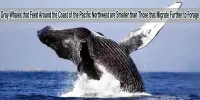For thousands of years, people have trained domesticated animals to assist with farming, transportation, or hunting.
But can we train wild animals to help us in conservation work? Wild animals can be trained to spot deadly predators, steer clear of poisonous food, and keep their distance from humans.
There are, however, few instances of training free-living animals to act in a manner that supports their habitat using conventional learning approaches. In our recently released work in the journal Biological Conservation, we taught native predatory wild rats from Australia to identify an unknown kind of cockroach prey. This training enhanced the rate of rat predation in a cockroach invasion simulation.
Growing number of aliens
Various animals have crossed otherwise impassable geographic barriers thanks to human-facilitated global trade and entered new ecosystems. These species are known as alien species, and their number continues to grow.
In their new location, some alien organisms are comparatively innocuous and even have the potential to benefit the ecology. Many others, however, have negative and expensive effects on agriculture and biodiversity.
Not all species that arrive in new environments become established or spread. Even fewer of these species become invasive. Despite the fact that there are numerous possibilities, we don’t truly understand why some species are successful while others aren’t. When native species fight back, either by consuming the newcomers or simply outcompeting them, it might prevent some species from thriving in their new environments.
However, native species can only resist against alien species if they can respond appropriately, which they may not do if they’ve never encountered the invaders before (biologists call this being ‘naïve’).
When two species interact that have no recent evolutionary or ecological history, naivety might happen. victims naivety is well known, and foreign predators have a huge impact on native victims that are unable to recognize or flee them.
But the role of native predator naivete in biological invasions is less clear. It’s possible that native predators won’t be able to identify an alien prey species or won’t be able to hunt it successfully. Predators sometimes can just prefer to hunt their natural prey. When predators are naive, alien prey can establish and spread unchecked.
Speeding up a natural process
Native predators do eventually learn to hunt alien prey, but this process can take a long time when prey aren’t encountered often.
By introducing a free-living native predator to the scent of a new prey species together with a reward, we hoped to find out if we could hasten learning.
We conducted our study on bushland in the outskirts of Sydney, New South Wales, using native bush rats (Rattus fuscipes) as our model predator. Our chosen alien prey species, speckled cockroaches (Nauphoeta cinerea), don’t live in Sydney and surrounds, so rats have no experience with them.
We kept cockroaches in little enclosures for days at a time, collecting odours with absorbent paper on the floor. To prevent unintentionally introducing cockroaches into the region, we frozen and secured the cockroaches to tent pegs while utilizing them as prey.
We confirmed the presence of bush rats at 24 locations, and randomly allocated 12 as training sites and 12 as non-training (control) sites. We left a metal tea strainer with the cockroach odor and three dead cockroaches as a reward at the training locations. Rats couldn’t get away with the tea strainer and cockroaches because they were tied to a tent post in the ground.
We used cameras to observe the rat behavior, and checked the training stations every one to two days. We also moved the stations so the rats wouldn’t just learn to associate the reward with the location.
Trained for an invasion
Immediately after training, we conducted a simulated invasion at all sites. The invasion involved ten dead and tethered cockroach “invaders.” The number of “surviving” (that is, uneaten) cockroaches was recorded each day for five days.
Cockroach prey in training sites were 46% more likely to be eaten than prey in non-training sites when we examined prey survival rates in sites with trained and untrained rats.
We also found the number of cockroaches eaten during training was a significant predictor for how many were eaten on the first night of the “invasion.”
Additionally, we wanted to make sure that the training process hadn’t just drawn more rats to the training areas. To accomplish this, we employed cameras to compare rat visits to all sites using a peanut oil attractant right after the invasion. There was no difference between training and non-training sites.
Our study is the first to train free-living predators to hunt species they’ve never seen before. It demonstrates the possibility of preparing our indigenous species to fend off biological incursions.
More generally, we believe that our work contributes to the expanding body of research showing that teaching animals to perform certain tasks, like clearing up litter or detecting out explosives, can help solve a range of issues.
















